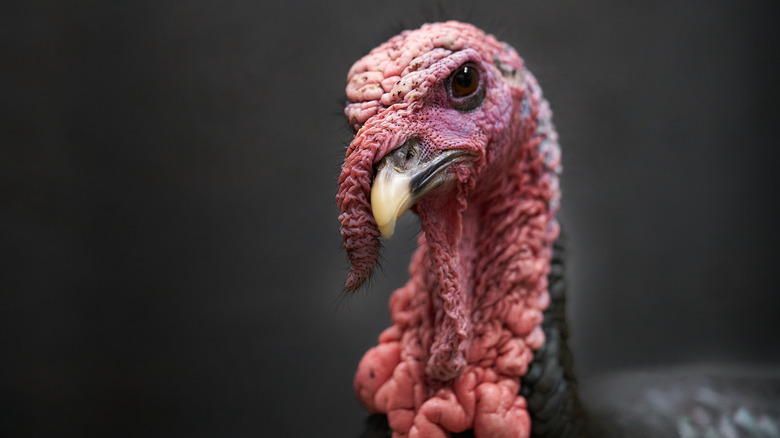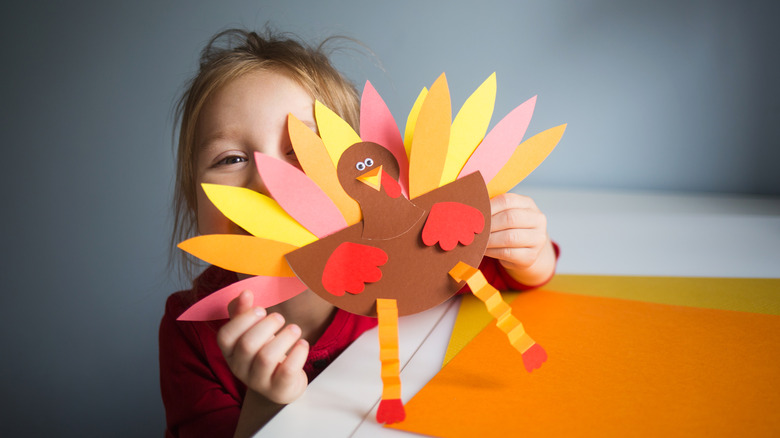The Real Reason People Used To Worship Turkeys Like Gods
The humble turkey tends to get quite a bad rap. It's often considered to be a stupid animal, though the reality is actually quite different. One Kind Planet says that they are social, curious creatures with more brains than you might think: They can supposedly learn the tiny details of an area larger than 1,000 acres.
Fortunately, though, there's always someone willing to give lesser-appreciated animals the respect that they deserve. For the ancient Egyptians, per Britannica, the lowly dung beetle was considered a scarab, an embodiment of the sun god, Khepri. Just as Khepri rolled the great disk that was the sun across the sky, so the dung beetle rolled its poopy cargo across the ground. High deference indeed.
The turkey, meanwhile, was worshipped by another fascinating ancient civilization: the Maya. For this Mesoamerican people, turkeys were also intrinsically linked to the divine. Here's the story of the Mayans' gobblin' gods, because they're for worshipping, not just for Thanksgiving.
The Washington Post reports that the domestication of turkeys took place around 2,000 years ago. In the remains of El Mirador, a Mayan city in modern-day Guatemala, archaeologists discovered the remains of half a dozen turkeys. The most intriguing thing about this discovery was that the birds' remains were situated at the Jaguar Paw Temple, a 30-foot-tall sacred site.
The odd-looking, fleshy vessel of the divine
According to The Washington Post, this temple is many miles from the natural range of this turkey species in the region at the time. This suggests two things: The birds were transported over long distances by the Mayans, and that they had a connection to the temple and Mayan spiritual beliefs.
The Trent University Archaeological Research Center and Florida Museum of Natural History's Erin Thornton, who investigated this discovery, told Live Science that these turkey fossils "came from right within the ceremonial precinct of the site, so these are probably the remains of some sort of elite sacrifice, meal or feast."
In a paper titled "The Ocellated Turkey in Maya Thought," Mariá Elena Vega Villalobos and Ana Luisa Izquierdo de la Cueva write that the bright and bold male of the Meleagris ocellata variant was particularly revered. Researchers have found that turkey was rarely eaten, perhaps being the exclusive fare of special rituals. Mayan iconography connects turkeys with the concept of the wahyis, a spiritual entity with a deep link to its human "possessor."
History explains that turkeys were believed to have special, potentially dangerous powers, and served as fleshy, living homes for the gods themselves. It's no wonder they were shown the utmost respect.

